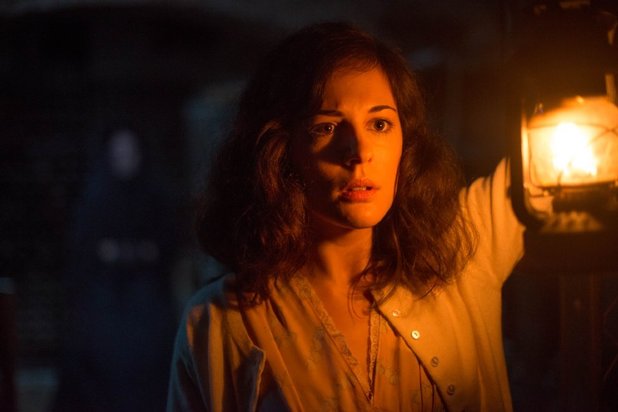When The Woman In Black was released in 2012, fans rejoiced at the return proper of Hammer horror. Whilst no masterpiece, the adaptation of Susan Hill’s novel delivered sufficient scares and atmosphere in the vein of old-school Hammer classics. It also delivered a fine box-office haul, becoming the highest-grossing British horror in two decades. Thus, in the name of a quick buck, this woman has been resurrected for The Woman In Black: Angel of Death, a follow-up that’s missing practically everything that made the first film work, not least the scares. The law of diminishing returns sees original director James Watkins replaced by TV veteran Tom Harper (Misfits, Peaky Blinders). To his credit, he does nail down the visual aesthetic from the first film, albeit shot a little too dark. Fog and damp pervade the film, contributing to an eerie location in which to stage some effective scares. Alas, that’s where we come up wanting.”
From the first film’s WWI setting, we jump to London 1941. Amongst the worried and haggard faces sheltering from the Blitz in an underground station, we find the smiling visage of Eve (Phoebe Fox), a young schoolteacher. A woman asks her how she can stay smiling through all this terror. Fox does indeed possess a charming smile, but her acting chops aren’t tested too harshly here. That smile is the only distinguishing characteristic given to Eve by Jon Croker’s limp screenplay. The script is littered with premonitions, back stories and setups for the title character to go BOO! every once in a while, but identifiable characters are thin on the ground.
Eve is assisting with the evacuation of schoolchildren from London, and guess where they’re off to? The production design on Eel Marsh House is solid, even if it will eventually be reduced to a glorified funhouse full of bumps in the night. Headmistress Hogg (Helen McCrory) decries the place as decrepit, but ‘decrepit’ is a good word to describe the scares in Angel of Death. Every single scare is so cheap and so obviously signposted that eventually the audience will start to point out the plot gaps and lapses in common sense that allowed them to happen. You will lose count at the number of times Fox is forced to walk into a dark room, shouting “Hello?” whenever a clatter or thump is heard, followed by a beat and BOO! An errant bird at a window, a child running from a room and a practical joke are among the well-worn setups used to jolt the audience. It might work the first time, but after twenty or so such scares, boredom will inevitably set in.
The cast are a mixed bag. Alongside Fox is Jeremy Irvine as a young pilot who drops by Eel Marsh House for an occasional flirt. He’s all chin and charm, but not much else. McCrory, meanwhile, is reduced to playing another stuck-up bitch with little to define her besides a backstory about her hubby in the war. Everyone here has a backstory, most of them unnecessary. The main thrust of the story sees one of the children, recently-orphaned Edward (Oaklee Pendergast) becoming a bit pally with Eel Marsh House’s oldest and dead-est resident, but exposition and thin characterisations rob it of urgency. The likes of Daniel Radcliffe and Ciarán Hinds lent a respectable sheen to a solid script the first time around, but here we have substitutes called up to carry a money-grabbing knock-off. The Woman In Black: Angel of Death takes a once-promising villain and reduces her to a repetitive jump-scare machine with little personality. For shame.

